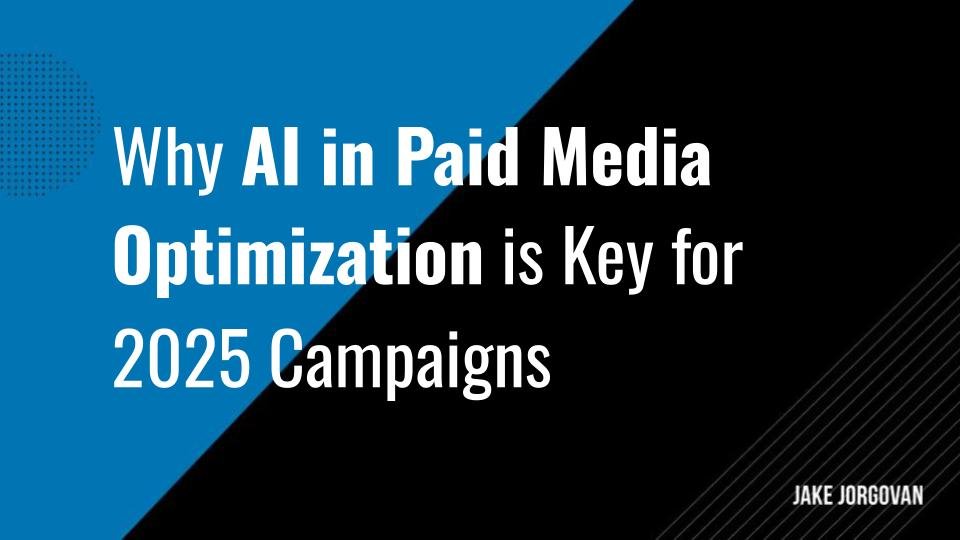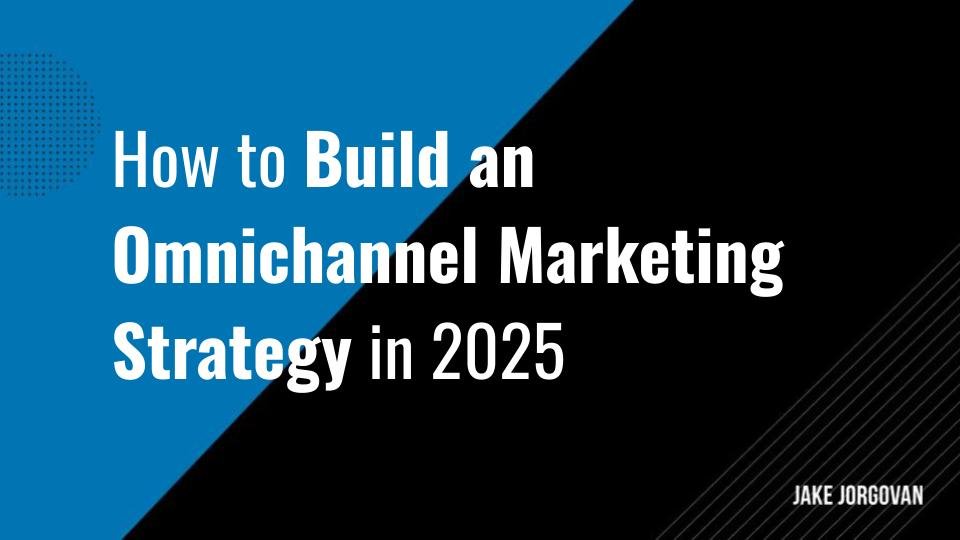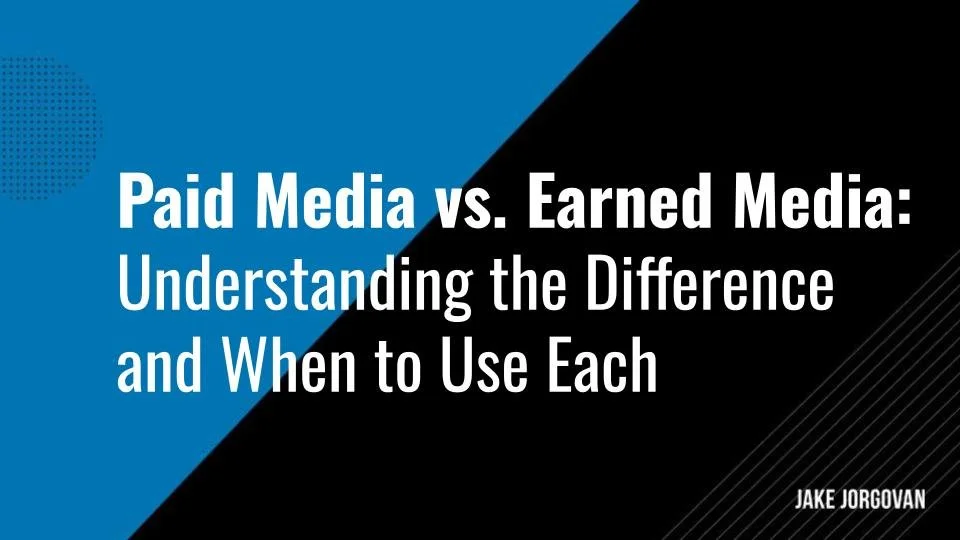Paid Media ROI: Measure & Maximize for Successful Advertising Campaigns
If you’re doing some kind of advertising for your brand, you need to ensure that every dollar spent on that advertising generates tangible results.
That’s why you first need to understand paid media ROI.
Without a clear grasp of how to measure that ROI, you risk wasting resources on campaigns that don’t drive real growth.
You’re on the right page, though.
We’ll discuss how to measure paid media ROI and provide actionable strategies to get the most out of your ad spend.
Whether you’re running ads on Google, Facebook, or other platforms, these insights will help you make data-driven decisions that boost your bottom line.
Let’s begin.
What Is Paid Media ROI?
Return on investment measures how profitable your paid media campaign is by comparing the revenue you generated to the campaign’s total cost. Therefore, you can understand whether your ad spend is generating a positive return.
How to Calculate Paid Media ROI
In digital marketing, the formula for paid media ROI is this:
ROI formula = [(Revenue−Cost)/ Cost] × 100
Let’s say you spend $2,000 on ads and generate $10,000 in revenue. Your ROI would be t00%, meaning you earned twice your investment back in profit.
Pro tip: There are plenty of tools that help you automate that calculation, which is what you need to handle multiple campaigns. We’ll talk about more in a second, but for now, Hubspot is one of them.
Why Measure Paid Media ROI
Measuring ROI correctly helps you understand which paid campaigns are driving real value. It allows you to identify underperforming campaigns, adjust your strategies, and allocate budget to the most successful ads.
For example, a Hubspot study found that companies with a strong focus on ROI measurement are 1.6 times more likely to obtain higher budgets. That’s because tracking ROI helps you optimize your ad spend and drive more profitable growth. And stakeholders like to ensure that each dollar you spend contributes to your bottom line.
Common Formulas and Metrics to Calculate ROI
In addition to the basic ROI formula, there are other metrics that help refine how ROI is understood in the context of paid media:
Return on Ad Spend (ROAS): Focuses specifically on the revenue generated from advertising spend:
ROAS formula = Revenue from Ads/ Cost of Ads
Customer Acquisition Cost (CAC): Measures how much it costs to acquire a new customer through paid media:
CAC formula = Total Ad Spend/ Number of New Customers Acquired
These formulas give a more nuanced view of campaign performance, helping you align your strategies with specific business goals like increasing sales or reducing acquisition costs.
That brings us to the next point.
Key Metrics to Measure Paid Media ROI
Even though paid media ROI theoretically depends just on revenue and campaign cost from a direct point of view, there are other indirect metrics that impact ROI.
Let’s see what these indirect ROI metrics are.
Click-Through Rate (CTR): Impacts ROI by Driving Traffic
CTR measures how many people who see your ads actually click on them. A higher CTR means your advertising campaign is genuinely relevant, which also entails more conversions.
Improving CTR can indirectly impact ROI by increasing the number of visitors without raising ad spend.
For example, if an ad has a CTR of 2% versus 1%, the 2% ad is twice as likely to drive traffic, which can lead to more sales.
Pro tip: Tools like Google Ads and Facebook Ads Manager provide detailed CTR metrics for each campaign. Use them wisely.
Conversion Rate: Turning Clicks into Paying Customers
Conversion rate tells you how many people take the action you want them to take after clicking on your ad. Conversions aren’t limited to buying. They can be about filling out a form, sending a review, or subscribing to your newsletter.
Conversion rate is crucial for maximizing ROI because a high rate of conversions means more of your clicks are turning into sales.
Pro tip: Improving landing page design, simplifying checkout processes, and using targeted offers can increase conversion rates.
A study by Unbounce found that even a 1% increase in conversion rate, from 1% to 2% conversions, means a 100% increase in performance. And that we can agree significantly impacts ROI, particularly in highly competitive industries.
Cost per Acquisition (CPA): Track Ad Spend Efficiency
CPA measures how much you pay for each new customer acquired through your paid media campaigns. Basically, you’ll divide the total ad spend by the number of conversions to get the CPA.
Pro tip: Lowering CPA is essential for maximizing ROI because it means you’re acquiring customers at a lower cost. For example, if your CPA is $10, but each customer generates $30 in revenue, you have a profitable ratio. Monitoring CPA helps you refine targeting, ad placements, and bid strategies to ensure efficiency.
Customer Lifetime Value (CLV): Calculate the Long-Term Value of a Customer from Paid Ads
CLV estimates the total revenue you get per customer over their entire relationship with your company. It’s a critical metric for understanding how much budget you have for acquiring each customer through paid media. The formula is:
CLV = Average Purchase Value × Average Purchase Frequency × Customer Lifespan
Knowing the CLV allows you to set more accurate CPA targets and adjust ad spend.
Let’s say your CLV is $20,000. In this case, you might be willing to spend $500 or even $5000 to acquire a new customer. That way, you’re making your campaigns more strategic and long-term oriented.
Return on Ad Spend (ROAS): ROAS vs. ROI, How They Differ, and When to Use Each
ROAS measures the revenue your advertising campaign generates per dollar spent on advertising. While similar to ROI, it focuses purely on ad performance rather than overall profitability. The formula is:
ROAS = Revenue from Ads / Cost of Ads
A ROAS of 4:1 means that for every dollar spent on ads, you earn $4 in revenue.
Remember: ROAS is used for comparing the effectiveness of different ad campaigns or channels. That way, you’ll decide better where to allocate your budget.
By comparison, ROI considers total business costs. However, ROAS is ideal for evaluating the direct profitability of individual campaigns.
How to Track Paid Media ROI
So, now you know how to calculate paid media ROI. The problem is that ROI depends on all the metrics we discussed above, and you’re probably running multiple advertising campaigns.
Here’s what will make your life easier.
Use Analytics Tools
Tracking paid media ROI requires reliable data, and analytics tools are essential for gathering this information. Here’s an overview of the key tools we recommend:
Google Analytics: This tool is great for tracking website traffic, conversions, and user behavior. Use Google Analytics to set up goals, such as purchases or sign-ups, and monitor how different paid campaigns drive traffic to your site. The “Acquisition” tab helps you see how different channels like Google Ads, social media, or direct traffic contribute to your conversions.
Facebook Ads Manager: If you’re running campaigns on Facebook or Instagram, Ads Manager provides detailed insights into your ad performance, including reach, engagement, and conversion tracking. Use it to monitor metrics like Cost Per Click (CPC), Cost Per Action (CPA), and Return on Ad Spend (ROAS) directly in the platform.
Third-party platforms: Tools like HubSpot, SEMrush, and Hootsuite offer all-in-one solutions for tracking campaigns across multiple platforms. These tools often provide advanced features, such as custom dashboards and automated reports, making it easier to see the full impact of your ad spend.
And they’re all intuitive. Here’s the complete cost analysis in Google Analytics:
Attribution Models
Attribution models determine how credit is assigned for conversions across multiple touchpoints in a customer journey. Here are some common models:
Last-click attribution: This model gives all credit to the last click before a conversion. It’s simple but may undervalue earlier interactions that influenced the purchase.
First-click attribution: Here, the first interaction a user has with your ad is credited with the conversion. It’s useful for understanding which channels drive initial interest but might overlook the role of later interactions.
Multi-touch attribution: This model divides credit across several touchpoints. For example, a linear model gives equal weight to all interactions, while a time decay model gives more credit to touchpoints closer to the conversion. Multi-touch attribution provides a more complete picture of how different ads and channels contribute to conversions.
Here's how all that info helps you calculate and optimize your ROI.
Attribution models allow you to see which touchpoints in a customer’s journey contribute most to conversions. For example, multi-touch attribution can highlight the role of display ads in raising awareness, even if they aren’t the final click.
This insight lets you allocate budget more effectively across channels so that each dollar contributes to conversions.
Basically, you can adjust your ad spend better to maximize ROI and reduce wasted costs.
Set Up Conversion Tracking
Accurate conversion tracking is essential for measuring ROI. Here’s how to set it up on different platforms:
Google Ads: Go to the “Tools & Settings” tab and select “Conversions” under “Measurement.” Set up conversion actions like website purchases or sign-ups. Use Google Tag Manager to add conversion tags to your site.
Facebook Ads: In Facebook Ads Manager, use the “Events Manager” to set up conversion events. After adding the Facebook Pixel to your website, you can define custom conversions, like purchases or cart additions.
Google Analytics: Navigate to the “Admin” panel and select “Goals” under your desired property. Create goals like destination (e.g., thank you page visits) or event-based goals (e.g., video plays). This enables you to see how paid ads contribute to goal completion.
UTM Parameters
UTM parameters help you see if your campaigns are effective by adding tags to your URLs. Here’s how to use them effectively:
Campaign Source (utm_source): Identifies where traffic is coming from, such as utm_source=google.
Campaign Medium (utm_medium): Defines the medium, like utm_medium=cpc for paid ads.
Campaign Name (utm_campaign): Labels the specific campaign, such as utm_campaign=spring_sale.
Pro tip: Tools like Google’s Campaign URL Builder make it easy to create tagged URLs. Use UTM tags in your ads to track which campaigns, keywords, or creatives drive the most traffic and conversions in Google Analytics.
Strategies to Maximize Paid Media ROI
Now that you know how to accurately calculate paid media ROI, let’s see how you can maximize it and skyrocket your advertising efforts.
Audience Targeting and Segmentation
Accurate targeting is how you ensure you’re talking to your ideal customers. And that can significantly boost ROI. Use audience data to segment users based on demographics, behavior, and purchase intent.
Pro tip: Platforms like Facebook Ads allow you to create lookalike audiences, targeting users similar to your best customers. Meanwhile, Google Ads offers in-market audiences and custom intent audiences to reach users actively searching for products like yours.
As a side note, if you’re interested in getting started with lookalike audiences now, here’s a short and sweet tutorial.
Ad CrEative Optimization
Continuously testing your ad creatives can help you sleuth out what resonates with your audience. A/B testing means you’ll be creating multiple ad variations and testing them against each other to see which performs better.
So, the point is to experiment with different headlines, visuals, and CTAs.
Facebook Ads Manager and Google Ads both have A/B testing functionality. That means you can compare different ad sets and automatically adjust toward the best-performing ads.
Bid Management
Optimizing bids is key to controlling costs and maximizing ROI.
Use automated bidding strategies like Google Ads’ Target CPA or Target ROAS, which adjust bids based on the likelihood of a conversion.
For manual bidding, start by identifying the most profitable keywords or placements and allocate more budget to those areas.
Pro tip: Regularly review your Quality Score in Google Ads, as a higher score can lower your CPC and improve ad positioning.
Remarketing Campaigns
Remarketing helps you reach users who have previously interacted with your website or ads. By targeting this warmer audience, you can improve conversion rates and ROI.
For example, use Google Ads’ remarketing lists to show ads to people who were on your specific pages, like a product page, but didn’t complete a purchase. On social media platforms, retarget users who watched your videos or commented on your posts.
Optimizing Landing Pages
Good landing pages can double your conversion rates from an average of 5% to 10% . That leads to a lower CPA. But you need landing pages that align with the ad message, load quickly, and offer a clear, compelling call to action.
Tools like Unbounce and Instapage make it easy to create optimized landing pages without needing extensive web development skills. Additionally, use Google Analytics to analyze how your page is performing and potentially make it better. For example, you can think of reducing bounce rates.
Common Pitfalls to Avoid
Measuring and maximizing your paid media ROI is, like any human endeavor, riddled with challenges. We can all make mistakes, so here are the three most common ones to know and avoid here.
Ignoring Data Analysis: The Dangers of Neglecting Regular Data Reviews
One of the biggest mistakes in paid media campaigns is neglecting regular data analysis. Without consistent reviews, it’s easy to miss underperforming ads or trends that indicate necessary adjustments.
Regularly analyzing metrics like conversion rates, click-through rates (CTR), and cost-per-acquisition (CPA) helps identify areas for improvement.
Without data-driven decisions, you risk wasting ad spend on strategies that aren’t effective, ultimately lowering your ROI.
Over-Focusing on Vanity Metrics: Why CTR and Impressions Don’t Always Equate to High ROI
It’s easy to get caught up in vanity metrics like CTR and impressions, but these numbers don’t always reflect profitability. A high CTR might indicate that your ad is appealing, but if it doesn’t convert into sales or leads, it’s not delivering a return.
Similarly, high impressions mean your ad is being seen, but it doesn’t guarantee engagement or conversions.
Remember: Focus on metrics that directly impact ROI, such as conversion rate, CPA, and Customer Lifetime Value (CLV). For example, an ad with a lower CTR but a higher conversion rate can be more valuable than one with high clicks but few conversions.
Failing to Adapt Campaigns: The Importance of Adjusting Campaigns Based on Performance Data
Digital marketing changes on what appears to be an almost day-to-day basis. Failing to adapt campaigns based on real-time performance data can result in missed opportunities and lower ROI.
For instance, if you notice that a particular audience segment is more responsive, it’s wise to reallocate more budget toward that segment.
Similarly, if a specific ad creative stops delivering results, it’s time to test new visuals or copy.
Conclusion: Driving Long-Term Success with Paid Media ROI
Achieving success with paid media requires more than just launching advertising campaigns—it’s about constant measurement, optimization, and adaptation.
Regularly tracking your ROI ensures that your efforts translate into real value for your business.
A mindset of experimentation and data-driven decisions can help you think of better strategies and understand your audience.
Remember, the most successful marketers are those who continuously test, learn and optimize.
Start using these strategies today to make every dollar count and achieve better results from your paid media campaigns.
Frequently asked questions
What is a good ROI for paid media?
A good ROI for paid media depends on the industry, but a general benchmark is a 3:1 ratio, meaning $3 in revenue for every $1 spent on ads. However, a higher ROI, like 5:1 or above, is often considered strong for e-commerce and direct response campaigns.
How often should I measure ROI for my campaigns?
It’s recommended to review your ROI weekly or bi-weekly for shorter campaigns to make quick adjustments. For longer-running campaigns, monthly reviews are sufficient for evaluating overall performance and making strategic changes.
What is the difference between ROAS and ROI?
ROAS (Return on Ad Spend) focuses solely on the revenue generated from your advertising costs. In contrast, ROI takes into account all costs, including product costs and other overheads, to determine overall profitability. Use ROAS for comparing ad campaigns and ROI for understanding the broader business impact.
How do I lower my CPA in paid campaigns?
Lowering CPA involves optimizing various aspects of your campaigns, such as improving ad relevance, refining targeting, using remarketing, and enhancing landing pages to boost conversion rates. A/B testing ad creatives and adjusting bid strategies can also help achieve a lower CPA.
Which analytics tools are best for tracking paid media performance?
Top tools for tracking paid media performance include Google Analytics for website behavior, Facebook Ads Manager for social campaigns, SEMrush for competitive insights, and HubSpot for end-to-end tracking of user interactions and conversions. These tools provide valuable data for analyzing ad performance and refining your campaigns.




















![Top 22 Paid Media Agencies to Work With in 2025 [Updated in March]](https://images.squarespace-cdn.com/content/v1/50baa49de4b0e51d69257e33/1705515561307-56Z45GN80B4L6J77ELDR/Top+12+Paid+Media+Agencies+to+Work+With+in+2024+%5BUpdated%5D.jpg)











